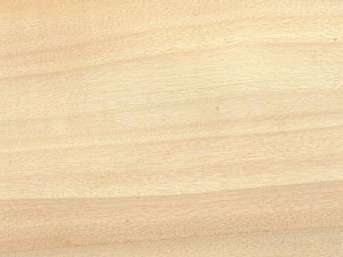
European aspen (Populus tremula)
Family: Salicaeae
Common names: European aspen, Finnish aspen, French aspen, Swedish aspen
Distributed in: Finland, France, Germany, Netherlands, Norway, Poland, Russia, Sweden, United Kingdom (Eastern Europe, Mediterranean Sea Region, Oceania and S.E. Asia, Western Europe)
Distribution overview: Native to Scotland, Ireland, England, and Wales, the species occurs in Europe, northern Africa, and Asia. Its natural range includes the entire British Isles, and is also found in the Scandinavian countries, Poland, and Russia. The tree tolerate poor soils very well. It occurs in the mountains in the southern region of its growth range.
Common uses: Boxes and crates, Decorative veneer, Drawer sides, Flooring, Furniture , Furniture components, Interior construction, Joinery, Matches, Plywood, Toys, Truck bodies, Veneer
Product sources: Several species of Poplar and European aspen are routinely marketed together, although timber quality within each species can vary significantly depending upon growth conditions.
Environment profile: Status has not been officially assessed
Tree size: Trunk diameter is 100-150 cm
Colors: the heart isWhite to cream, Yellowand the sapwoodWhite, Yellow.The grain isStraight, the textureUniformand the lusterMedium
Natural durability: Very durable, Very little natural resistance
Odor: No specific smell or taste
Kiln Schedules: Schedule E (4/4) United Kingdom
Kiln Drying Rate: Very slow
Drying Defects: Expect severe degrade from water pockets., Splitting
Ease of Drying: Slowly
Blunting Effect: Slight
Cutting Resistance: Saws tend to bind during conversion
Gluing: Excellent gluing properties
Nailing: The ease of nailing is satisfactory
Planing: Requires very sharp and thin cutting angles
Response to hand tools: Easy to Work
Steam bending: Unsuitable for bending - wood tends buckle severely on concave face
Strapping and end-pressure devices are reported to do very little to improve bending properties
Painting: Good; Polishing: Very Good to Excellent; Staining: Wood may stain unevenly ; Varnishing: Satisfactory
;
- Numerical data Metric
- Numerical data English
- Strength properties
- References
 |
 |
 |
 |
| Item |
Green |
Dry |
Metric |
| Specific Gravity |
|
0,42 |
|
| Density |
|
|
kg/m3 |
| Bending Strength |
|
|
kg/cm2 |
| Crushing Strength |
|
|
kg/cm2 |
| Hardness |
|
|
kg |
| Impact Strength |
|
|
cm |
| Shearing Strength |
|
|
kg/cm2 |
| Stiffness |
|
|
1000 kg/cm2 |
| Tangential Shrinkage |
|
|
% |
| Radial Shrinkage |
|
|
% |
| Weight |
|
|
kg/m3 |
| Maximum Load |
|
|
cm-kg/cm3 |
| Toughness |
|
|
cm-kg |
| Static Bending |
|
|
kg/cm2 |
|
 |  |  |  | | Item | Green | Dry | English | | Specific Gravity | | 0.42 | | | Weight | 26 | 21. | lbs/ft3 | |
Weight = moderate
Modulus of Elasticity (stiffness) = low
Compression strength (parallel to grain) = medium
Bending strength (MOR) = low
Coombes, A.J.1992.Trees - The Visual Guide to More than 500 Species from Around the World.Eyewitness Handbooks.Published in the United States by Dorling Kinderley, Inc, New York.Distributed by Houghton Mifflin Company, Boston.HMSO. 1981. Handbook of Hardwoods, 2nd Edition. Revised by R.H. Farmer. Department of the Environment, Building Research Establishment, Princes Risborough Laboratory, Princes Risborough, Aylesbury, Buckinghamshire.HMSO. 1985. Broadleaves. Forestry Commission Booklet No. 20. Text by H.E. Edlin. Revised by A.F. Mitchell. Forestry Commission, Her Majesty's Stationery Office, London.Laidlaw, W.B.R.1960. Guide to British Hardwoods.Published by Leonard Hill [Books] Limited, 9 Eden Street, N.W.1, London.Lincoln, W.A. 1986. World Woods in Color. Linden Publishing Co. Inc. Fresno, California.
|








